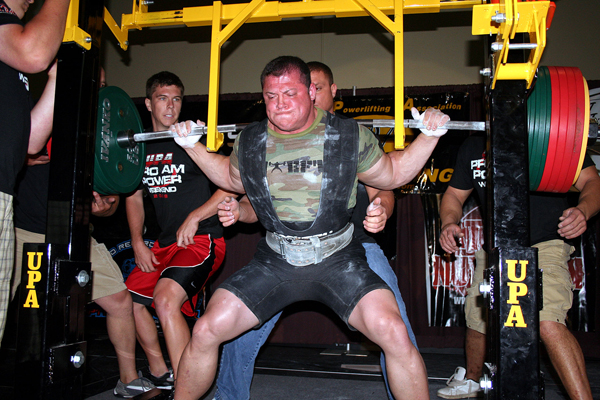 Whether you are a body builder, powerlifter, Olympic lifter, or recreational athlete, you’ll probably get a kick out of seeing just how much you can lift (or in some cases, it’s your job). While some weight lifters try to hit a new 1 repetition maximum (1RM) on the main lift every single workout, this is usually not a good idea. The potential for injury and over training increases with every max effort lift you attempt. Instead, a better philosophy is to ramp up to testing your 1RM using several 3-4 week micro-cycles. However, that is a discussion for another day.
Whether you are a body builder, powerlifter, Olympic lifter, or recreational athlete, you’ll probably get a kick out of seeing just how much you can lift (or in some cases, it’s your job). While some weight lifters try to hit a new 1 repetition maximum (1RM) on the main lift every single workout, this is usually not a good idea. The potential for injury and over training increases with every max effort lift you attempt. Instead, a better philosophy is to ramp up to testing your 1RM using several 3-4 week micro-cycles. However, that is a discussion for another day.
Today I want to address the 1RM test itself, or more accurately the max effort test. If you are not in a competition at that exact moment, there is really no need to attempt a true 1RM. As long as you have a stable frame of reference for your max effort attempt, you will be able to quantify your progress. I would like to suggest using 2RM for your max effort attempt. The reasons for this are several – safety, psychological, CNS activation, and time under tension.
Strength coach Christian Thibaudeau explained it best throughout a series of 6 tweets titled “2RM better than 1RM for max effort.”
2RM better than 1RM for max effort
In case you are not subscribed to Christian’s Twitter feed or Facebook page, allow me to re-print his thoughts below:
- REASON 1: puts you in a better mindset for success; implies that you will succeed on the first rep
- REASON 2: safer as you can always stop after the first rep if you don’t feel the second
- REASON 3: more practice with near-maximal weights, better development of strength-skill and CNS
- REASON 4: MUCH less negative impact on CNS (measured by HVT monitor) with a 2RM vs. a 1RM.
- REASON 5: have a much lesser psychological strain than 1RM and don’t require being in the zone as much
- REASON 6: more fatigue (stimulation) imposed on the recruited FT fibers = more growth stimulation
Connect with Christian on Twitter
Tags: 1rm, 2rm, max effort, powerlifting, strength